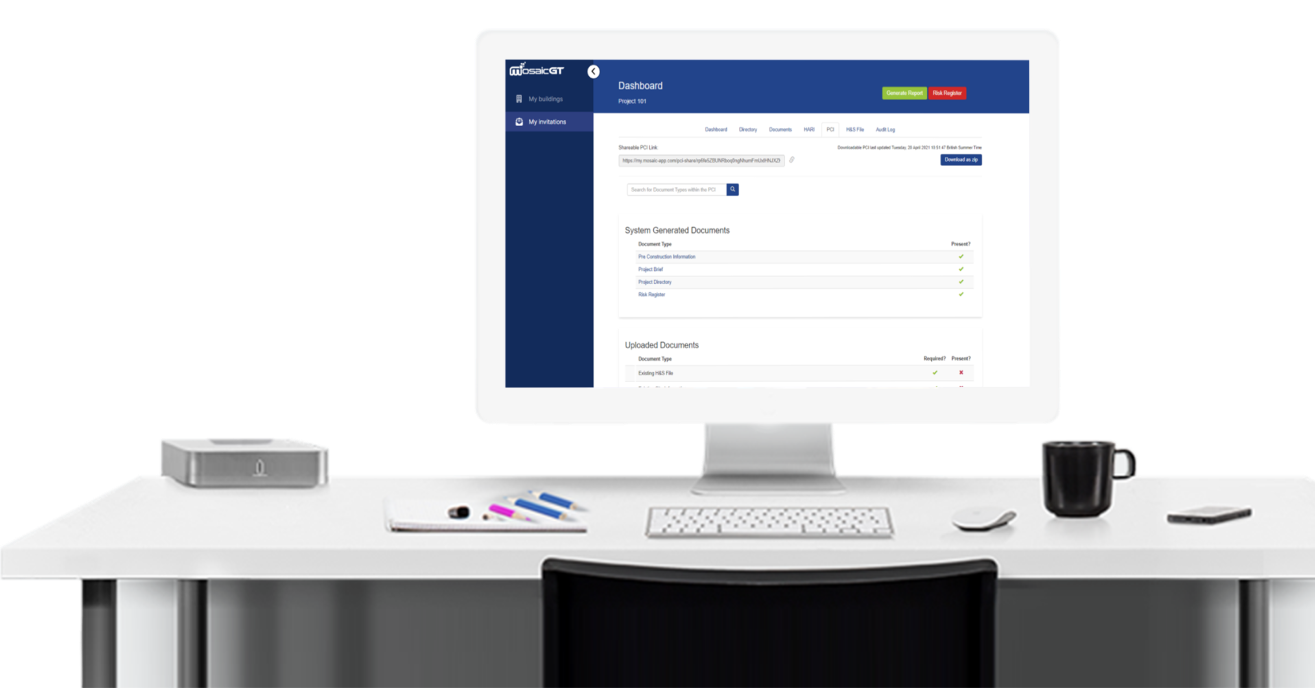Our Blog


The Building Safety Act has changed how the construction industry manages information. It now demands more transparency, accountability, and access to accurate data at every stage of a building’s lifecycle. At the centre of this shift is the golden thread of information, a digital record that allows accountable persons to understand, manage, and prove compliance with building safety rules.
Migrating Legacy Records into Golden Thread Systems is one of the biggest challenges organisations face as they begin to implement the Golden Thread. One major challenge is moving decades of old records, such as paper files, drawings, and PDF documents, into digital systems without losing important details. Switching to digital information is vital for safe and effective building management, but it must be done carefully to protect data accuracy and to keep building safety risks under control.
The golden thread of information sits at the centre of today’s building safety regulations. Required by the Building Safety Act, it ensures that safety information stays accurate, accessible, and up to date throughout a building’s lifecycle.
For higher-risk buildings, maintaining this digital record is now a legal duty. It helps dutyholders manage fire safety risks and prove compliance with building regulations.
To meet these standards, the construction industry relies on digital tools that support collaboration and version control. Building Information Modelling (BIM) and common data environments (CDE) are key to this process, allowing teams to share, update, and verify digital information in real time during the design and construction phase.
Many organisations still depend on old paper files or shared folders. While these contain valuable history, they do not meet modern information management standards for structure, security, or accessibility.
Migrating legacy records into a digital system helps prevent data loss and supports compliance with building safety laws. Without migration, accountable persons may struggle to find key records such as fire plans, safety certificates, or maintenance reports. These documents are often needed to show compliance with applicable building regulations or to respond to an inspection.
Migration is more than a technical job. It is a process of checking and organising information so that every record can be trusted. When done correctly, it turns archives into searchable, reliable data that improves fire safety and supports better decisions throughout the building’s life.
Successful migration starts with clear planning. Each record should be checked for importance and accuracy before being uploaded to a new system. A simple but effective process can help ensure nothing is missed.
This framework does more than just convert paper to digital files. It creates a connected system of information that grows with the building. Clear controls for updates and approvals reduce the chance of errors and support long-term compliance.
Creating a compliant golden thread of information depends on using the right digital tools. Building Information Modelling (BIM) brings together all building details in one model, helping designers, contractors, and safety managers work together. It ensures that all decisions made during the design and construction phase are properly recorded and easy to trace.
Alongside BIM, common data environments (CDE) act as central platforms for sharing and storing documents. When managed correctly, a CDE allows everyone to work with the same accurate data, creating a real single source of truth.
Security and accessibility are just as important as collaboration. Following information management standards such as ISO 19650 and ISO 27001 ensures that data is well organised and secure. Meeting these standards not only supports building safety regulations but also builds confidence among owners, residents, and regulators.
Some organisations now use purpose-built applications to make compliance easier. The MosaicGT app helps landlords and building managers track documents, sign-offs, and maintenance schedules across multiple properties. It simplifies record keeping, helps manage responsibilities under the Building Safety Act, and provides a clear picture of where information might be missing or out of date.
Migrating old data often presents practical and cultural challenges. Poor-quality scans, missing documents, and inconsistent formats can slow progress. To overcome this, focus first on higher-risk buildings and essential safety information such as fire strategy drawings and inspection reports.
Cultural change is also vital. Many teams in the construction industry are used to paper records or separate software systems. Moving to digital ways of working requires training and leadership support. When accountable persons promote the use of structured digital information, it builds a shared sense of responsibility and makes fire safety easier to manage.
Finally, make sure access and ownership are clear. Decide early who can edit, approve, or archive records to prevent confusion. Setting these rules before migration starts helps create a system that remains accurate and compliant in the long term.
Migration should not be seen as a one-time task. It forms the base for ongoing compliance with building safety rules. As buildings change over time, their digital records must change too. Regular reviews and updates keep the golden thread of information trustworthy and current.
For accountable persons, maintaining accurate digital information means they can always show control over safety data and meet their duties under the Building Safety Act. For residents, it provides confidence that building safety risks are being managed every day.
The move from scattered records to connected digital systems marks a significant improvement for the construction industry. Treating legacy data as a valuable resource rather than a problem helps create safer, smarter, and more compliant buildings for the future.

Your Home, Your Safety: A Vital Campaign for Building Safety In an ever-evolving world where safety concerns are paramount, ensuring the security of our homes becomes increasingly crucial. The UK government’s Health and Safety Executive (HSE) has launched an impactful campaign titled “Your Home, Your Safety,” aimed at empowering residents to take proactive measures towards… Continue reading Your Home, Your Safety: A Vital Campaign for Building Safety
read more
In recent years, the discourse around building safety has gained significant traction, particularly in the UK, following tragic incidents such as the Grenfell Tower fire. As part of ongoing efforts to enhance safety standards, the UK government has introduced the Building Safety Golden Thread initiative. This groundbreaking approach aims to establish a comprehensive framework for… Continue reading Unlocking the Golden Thread: Ensuring Safety in UK Buildings
read more
The Building Safety Act of 2022 stands as a landmark piece of legislation, representing a significant milestone in the ongoing quest for safer, more resilient built environments. To truly appreciate the impact of this act, it’s essential to delve into its history, tracing the evolution of building safety regulations and the critical events that paved… Continue reading The Evolution of Safety: the Building Safety Act of 2022
read more